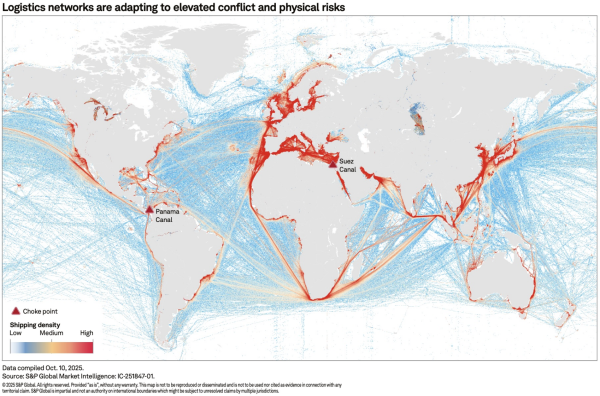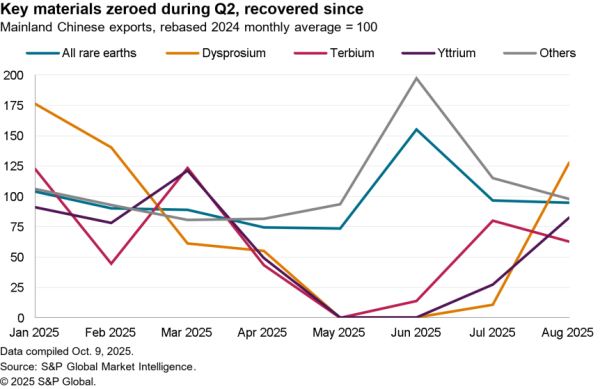The Republican Party has not implemented a formal policy platform during this week’s National Convention and has instead agreed to “continue to enthusiastically support the President’s America-first agenda“.
The Trump campaign’s second-term agenda meanwhile includes 50 commitments including six items connected to trade policy including: enact fair trade deals that protect American jobs; “Made in America” tax credits; and four items focused on repatriating manufacturing jobs from China.
The policies are largely based on tax credits and deductions as well as federal contract policy. Notably there were no mentions of tariffs or the technology aspects of rivalry with China despite the clear “Tough on China” standpoint which, as discussed in Panjiva’s Q3 Outlook, is likely to be a defining characteristic of the election debate.
Running into the campaign the Trump administration may tout the successes of the phase 1 trade deal with China. Talks between China’s Vice Premier Liu He and U.S. Trade Representative Robert Lighthizer with Treasury Secretary Steve Mnuchin were held on Aug. 25 to discuss the phase 1 trade deal between the two countries.
The U.S. read-out noted that a review was made of “steps that China has taken to effectuate structural changes called for by the Agreement” as well as “significant increases in purchase of U.S. products“.
A review of the deal was required by Aug. 15 and has come in the wake of a surge in Chinese farm goods’ purchases. Yet shipments of energy and manufactured goods remain well behind schedule and total Chinese imports are already $38.2 billion behind schedule as at June 30.
Catching up with the targets in terms of energy shipments may prove complex. China may cut its natural gas imports due to existing significant gas in storage, Bloomberg reports. China’s imports of oil meanwhile have accelerated but are restricted by port congestion according to S&P Global Platts.
Panjiva’s data shows U.S. exports of LNG to China climbed by 113% in Q2 compared to the same period of 2017. Yet, crude oil shipments fell by 14.5% – partly reflecting the slide in oil prices – while refined products fell by 45.3% and coal by 93.0%. Year-to-date energy exports reached $2.86 billion compared to the phase 1 trade deal’s commitment of $26.2 billion, i.e. halfway through the year China is only 11% of the way to its target.

Source: Panjiva
Nonetheless, an apparent commitment to proceed as planned and keep the deal in place despite China running behind schedule on purchases may be designed to ensure minimal disruptions during the run-up to the U.S. general elections. Notably there was no specific mention of tariffs as part of the second term plan despite them being central to policy execution in the first term.
The implementation of tax credits to encourage “bring back 1 million manufacturing jobs from China” in the Trump plan will include the use of tax credits as well as “100% expensing deductions for essential industries like pharmaceuticals and robotics“. The latter two seem curious industries to target given U.S. reliance on China in those sectors are small.
Panjiva’s data shows that China’s share of U.S. robotics imports was just 1.5% in the 12 months to June 30 for completed machines. Trump administration policy on technology tariffs under the section 301 program may already have driven changes in sourcing behavior to include other countries, especially for components.
For pharmaceuticals the figure was just 1.6% though there may be concerns about specific precursors that are driving the policy where China’s share is higher. That would require micro-management of the tax policy to ensure the “right” imports were displaced without incurring excessive costs.
It remains to be seen whether it would be acceptable to provide tax breaks to Chinese companies that open manufacturing plants in the U.S. Panjiva’s data shows that U.S. seaborne imports of pharmaceuticals have climbed by 12.5% year over year in the 12 months to July 31. That’s included a 15.9% rise in shipments linked to Zhejiang Medicine and a 13.3% rise in imports associated with Humanwell. Not all importers have seen an increase with Huahai Pharma’s imports down by 15.4%.
There has been a surge more recently linked to the COVID-19 pandemic. Indeed, total seaborne imports of pharmaceuticals from China reached their highest in June for at least 10 years after a 57.3% surge in Q2 which has been followed by a 51.0% jump in July.

Source: Panjiva




